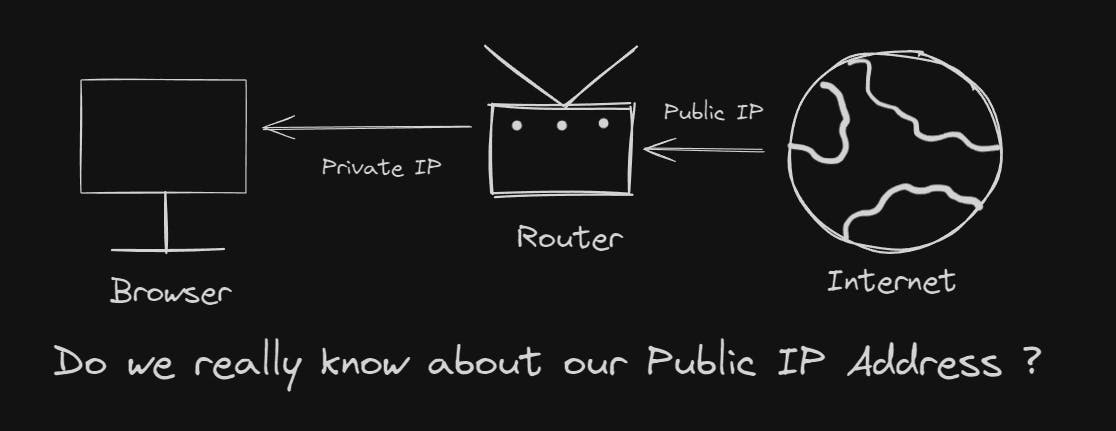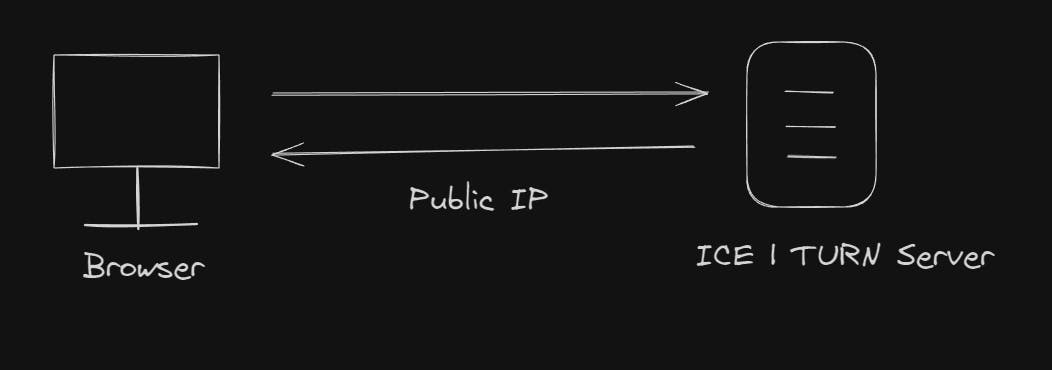In the vast digital landscape, WebRTC emerges as a wizardry, seamlessly connecting two web browsers and allowing them to share data without the intermediary of a server. At its core, WebRTC operates on the UDP protocol, facilitating swift and efficient data transmission between browsers.

The Connection Ritual: IP Addresses and the ICE | TURN Servers

Much like calling a friend, WebRTC relies on an address to establish a connection. However, instead of phone numbers, IP addresses take the spotlight. Here's the twist: we can't just hand out our IP addresses like candy. Why? Because we often don't know our public IP address, the elusive tag of our router.

Enter ICE | TURN servers, the unsung heroes of WebRTC. When we seek our public IP address, we turn to these servers, and they graciously return the missing piece of the puzzle. Now armed with our public IP address, we can share it with the browser we aim to connect with. Yet, there's a hurdle – we can't simply toss it over; we're not directly connected. This is where the socket server enters the stage, facilitating the initial connection through a process aptly named signaling.
Signaling: The Gateway to Connection
Signaling, the magical handshake before the grand connection, is the art of sharing IP addresses through the socket server. It's the initial exchange that sets the stage for the data-sharing dance. Once the browsers are acquainted, the need for the socket server dissipates, and they can continue their discourse independently.
SDP: The Enigmatic Messenger

Now, let's talk about the secret language of WebRTC – Session Description Protocol (SDP). Picture it as the parchment on which the browsers inscribe the details of their capabilities, preferences, and other vital information. This SDP is then shared between the two browsers, enabling them to understand each other and commence the direct data exchange.
In the intricate web of WebRTC, the dance of IP addresses, signaling, and SDPs unfolds, creating a symphony of connection between browsers. It's a technological waltz, choreographed to bring together digital entities in a harmonious exchange of information, all without the need for a central server. As the curtains rise on this fascinating performance, WebRTC stands as a testament to the marvels of modern web communication.

Advantages of WebRTC:
Real-Time Communication: WebRTC enables seamless real-time communication directly between browsers, fostering instant connections for video calls, voice chats, and data sharing.
Peer-to-Peer Connection: The peer-to-peer nature of WebRTC eliminates the need for an intermediary server during communication, reducing latency and enhancing the overall user experience.
No Plugins Required: Users can enjoy WebRTC-powered features without the hassle of installing additional plugins or third-party software, making it convenient and user-friendly.
Open Source and Cross-Browser Compatibility: Being an open-source project, WebRTC promotes collaboration and innovation within the developer community. It also boasts excellent cross-browser compatibility, ensuring a consistent experience across different platforms.
Security and Encryption: WebRTC prioritizes security by incorporating encryption protocols, ensuring that communication remains private and protected from potential threats.
Versatility in Applications: WebRTC is not limited to video calls alone; it can be harnessed for a wide range of applications, including file sharing, screen sharing, online gaming, and more, making it a versatile solution.
Certainly! If you're seeking video content on the topic of WebRTC, I highly recommend watching Piyush Garg's insightful video available at https://www.youtube.com/watch?v=pGAp5rxv6II. In this engaging presentation, Piyush Garg delves into the intricacies of WebRTC, providing a comprehensive understanding of its functionality and applications.
Throughout the video, Piyush skillfully breaks down the complexities of WebRTC, making it accessible to both beginners and those well-versed in web technologies. His content is not only informative but also presented in a clear and engaging manner, making it a valuable resource for anyone looking to grasp the nuances of WebRTC.
Whether you're a developer seeking technical insights or someone curious about the workings of real-time communication on the web, Piyush Garg's video promises to be a worthwhile watch. Don't miss the opportunity to enhance your understanding of WebRTC through this well-crafted and informative presentation.